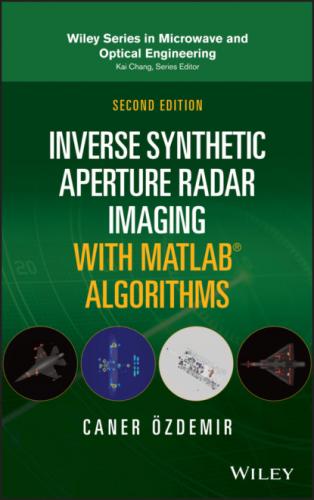where L1 is the transmit loss mainly due to finite conductivity of the transmission line or dielectric losses. Once the power is delivered to the antenna, the power radiated by the antenna is
where Γtx is the reflection coefficient at the terminal of the antenna and is given by
(2.15)
In the above equation, Za is the antenna radiation impedance and Zo is the characteristic impedance of the transmission line connected to the terminals of the antenna. The loss, 1/(1 − |Γtx|2) ≜ Ltx, associated by the impedance mismatch at the transmitter, is called the transmitter loss. Of course, if the antenna is matched, the radiated power will be equal to the power transmitted to the antenna as
Figure 2.6 Geometry for obtaining bistatic radar range equation.
(2.16)
When the power is radiated by the transmitting antenna at a particular direction with the antenna gain of G1, power density at the range of R1 (where the target is located) can be found as
(2.17)
The power incident to the target is scattered with an amount of the equivalent echoing area, or simply the RCS of the target. Therefore, the scattered power is then equal to
(2.18)
Then, the power is reradiated by the target as it reaches the receiver antenna located at R2 distance away from the target. The power density of the scattered power around the receiver becomes
(2.19)
At this stage, a very small amount of power is available to the receiving antenna. Therefore, it is crucial to catch as much power as possible by using a large aperture antenna. This implies that it is preferable to use largest practical aperture or reflector to collect as much of the incident power as possible. Antennas capture the incident signals with their effective apertures, Aeff, but not their actual apertures (Balanis 1982). In most antennas, effective aperture sizes are smaller than the actual aperture sizes. The power captured by the receiver antenna is then equal to
(2.20)
Antenna effective aperture, Aeff, can be written in terms of its gain, G2 as (Balanis 1982)
(2.21)
Replacing effective aperture Aeff with the receiver gain G2 in Eq. 2.22 using the relationship in the above equation, one can easily obtain the following equation for the power captured by the receiver as
Some of the captured power is delivered to the transmission line of the receiver if the antenna is not perfectly matched. Then, the received power at the front end of the transmission line is given by
Here, Γrx is the reflection coefficient at the terminal of the receiving antenna and is equal to
(2.24)
In the above equation, Zb is the receiving antenna's radiation impedance, and Zo is the characteristic impedance of the transmission line connected to the terminals of the antenna. The loss, 1/(1 − |Γrx|2) ≜ Lrx, associated by the impedance mismatch at the transmitter, is known as the receiver loss. Of course, if the antenna is matched, the received power will be equal to the power captured by the antenna as
(2.25)
Rewriting Eq. 2.23 in terms of the received power, one can easily obtain
(2.26)
This power is then transmitted to radar receiver by using a transmission line. If there are some electric and/or dielectric losses, L2, within the line, the power output to the radar receiver will be equal to
(2.27)
If we insert the input power to the above equation with the help of Eqs. 2.13 and 2.14, we can get the famous radar range equation as below:
In this equation, Ltot is the total loss accounted for all the losses and is given by
(2.29)
If both the transmitter and the receiver antenna are perfectly matched and there are no losses inside the transmission lines, then Ltot = 1; therefore, Eq. 2.28 can be simplified to give
2.4.2 Monostatic Case
In the case of monostatic operation of radar, the same antenna
